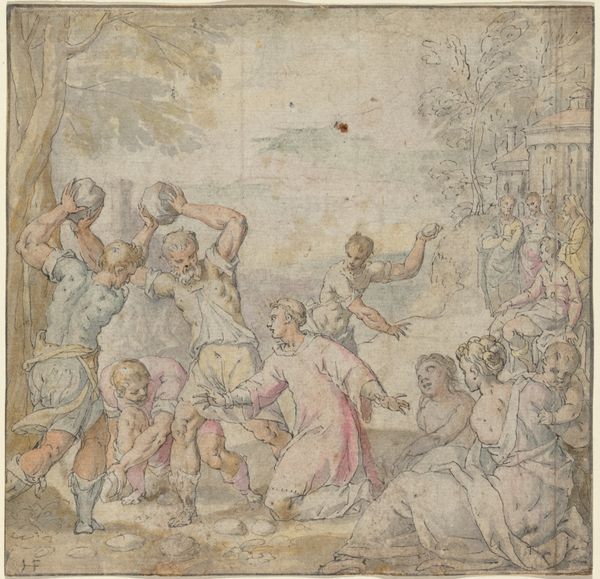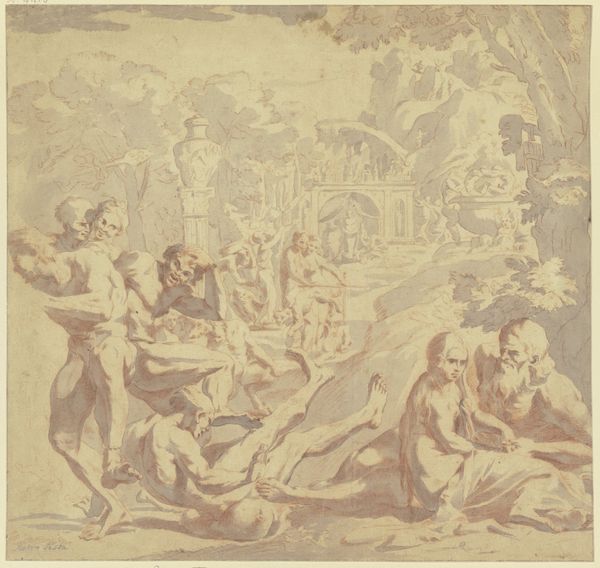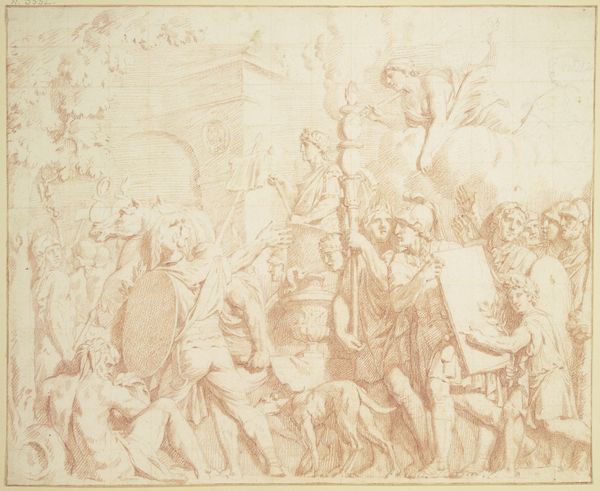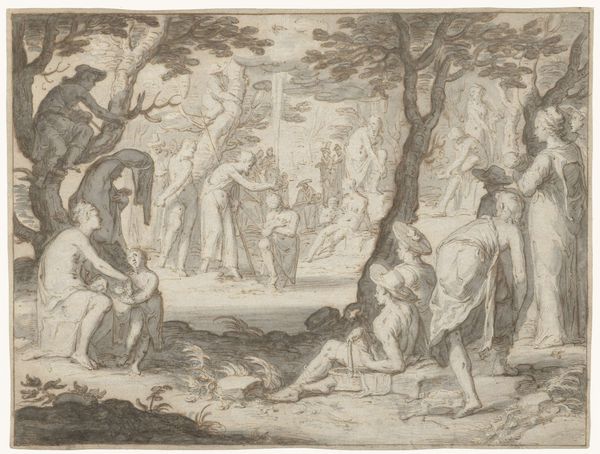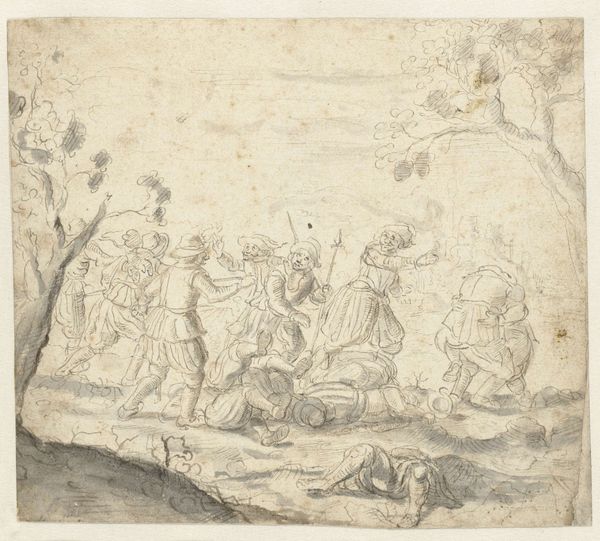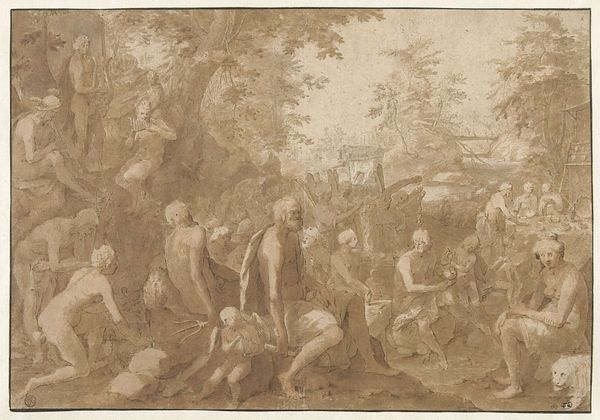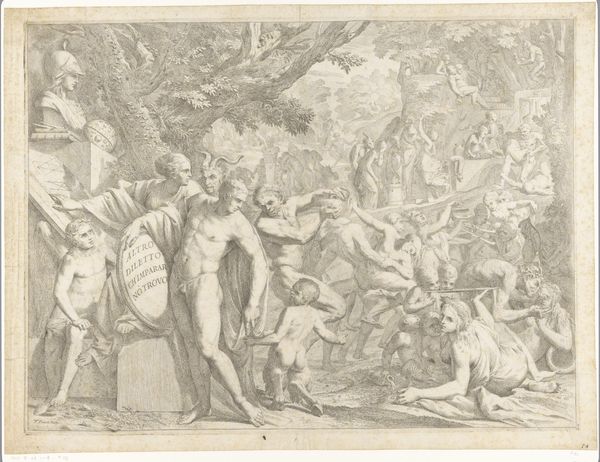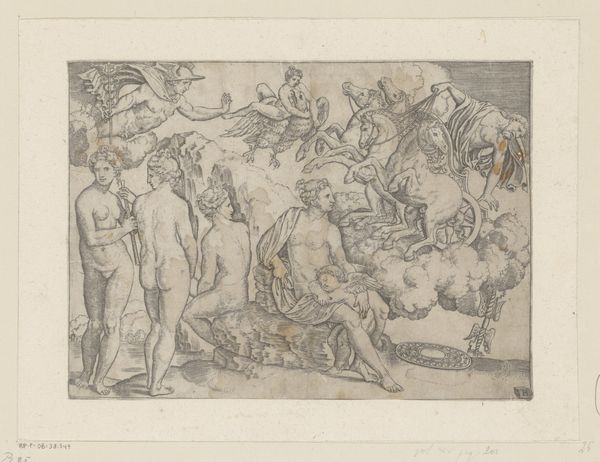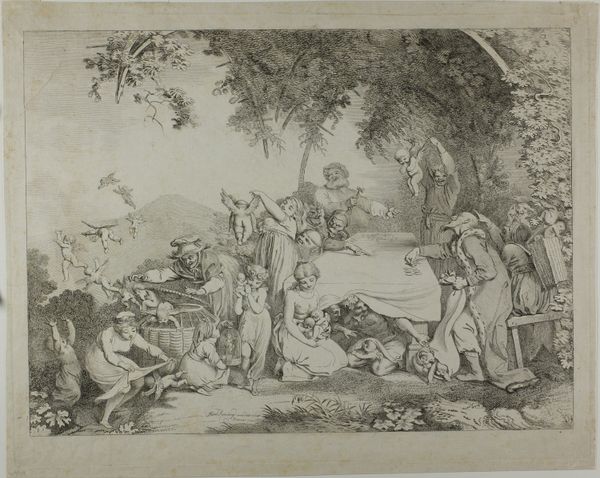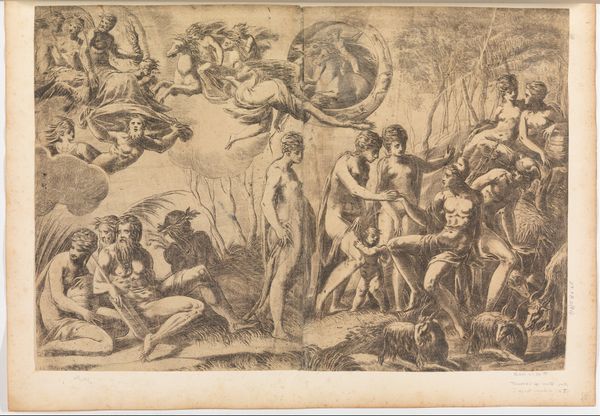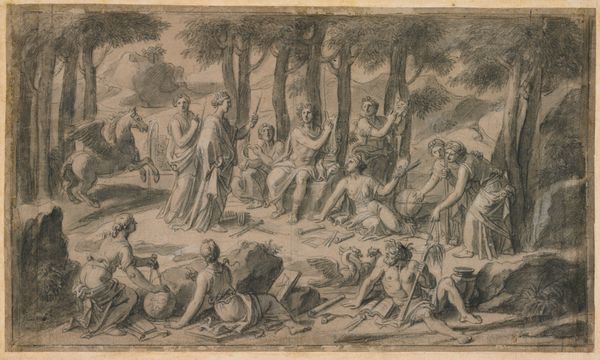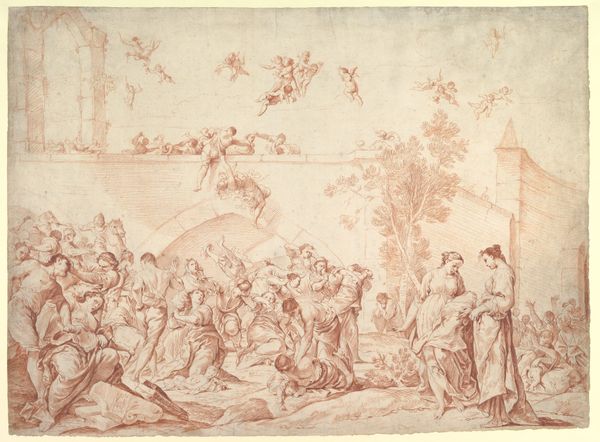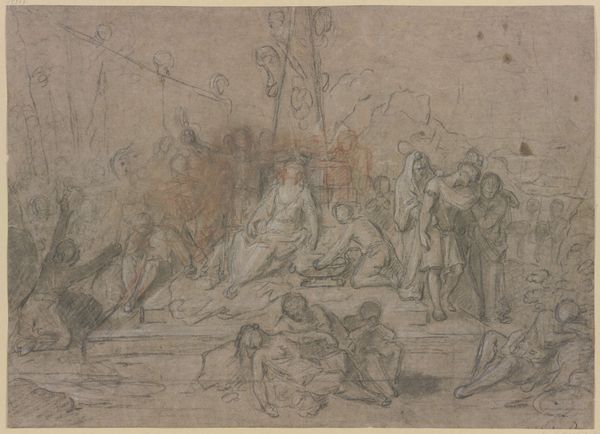
drawing, painting, watercolor, chalk, graphite
#
drawing
#
allegory
#
baroque
#
painting
#
figuration
#
watercolor
#
chalk
#
graphite
#
history-painting
#
watercolor
Copyright: Public Domain
Editor: Here we have Johann Viktor Platzer’s, "The Triumph of Bacchus" from around 1625, currently residing in the Städel Museum. It looks to be watercolor, chalk, and graphite on paper. It all seems a little hazy, dreamlike. So much going on! What exactly am I looking at here? What do you see in this piece? Curator: A glorious, slightly tipsy parade! And that haziness you mention? It feels like a memory, or a half-remembered myth. It speaks to me of a world viewed through a wine-soaked lens. Imagine the scent of crushed grapes, the echoing laughter... Does it bring anything to mind for you? Perhaps a modern-day bacchanal? Editor: Sort of like a college party gone wild, but with elephants and a temple in the background. But why paint it this way? Curator: I think it's the essence of the Baroque aesthetic. A yearning for a bygone Golden Age, where the gods walked among us. Plus, let’s consider the medium - chalk, graphite, watercolour. They all lend to a more illustrative than a grandiose and traditionally Baroque effect, don't they? Editor: That makes sense, illustrative almost like it was plucked from an old manuscript. Curator: Precisely! It invites us to contemplate not just the triumph, but also its fleeting nature. Think about the ephemeral nature of the celebration itself, all that revelry, all those half forgotten rules! Platzer makes it all come across almost… delicately. And perhaps reminds us not to take it so seriously. Editor: It’s interesting how the medium affects our reading of the theme itself! I'll never look at watercolor the same way again. Curator: Ah, well that is the magic of art, isn't it? Always teaching us new ways to see and to feel.
Comments
No comments
Be the first to comment and join the conversation on the ultimate creative platform.
